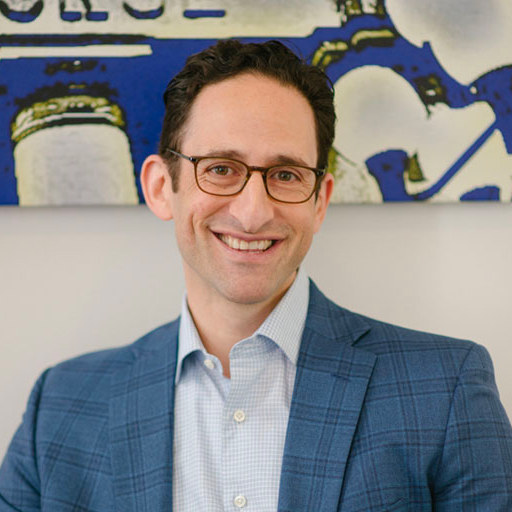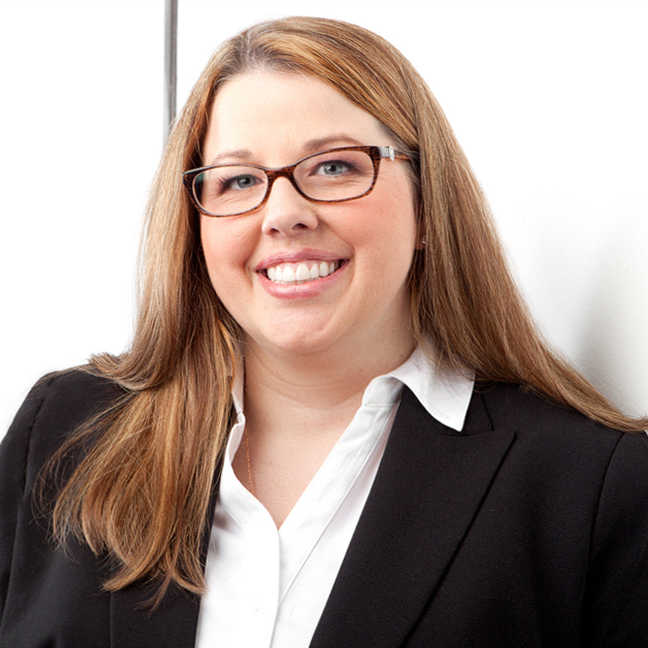EPISODE TRANSCRIPT:
Paul Tyler:
What makes a retirement recommendation not only work, but also stick for your client? Could it be a combination of personality traits and beliefs about the market? We were really fortunate this week to have Dr. Wade Pfau and Alex Murguia on to discuss their research on the topic. They walk us through the tool they built to help to decode what exactly makes our clients tick. Also, do you want to get regular updates on news about Wade, Alex and other guests of our show? Go to thatannuityshow.com and subscribe to our newsletter. We hope you enjoy our show.
Ramsey Smith:
Today’s show is sponsored by our friends at The Index Standard. As many of you who listen to our show certainly know fixed index annuities and RILAs are getting more complex and technical just when fiduciary rules are getting stricter. So how do you choose the right indexes and allocations? You should consider The Index Standard. They’re an independent provider of ratings and forecasts on all indices and ETFs used in the US insurance space. Their process is designed to be systematic and unbiased with the goal of identifying robust and well-designed indices. We all know finance is complex. The Index Standard has a clear rating system and uses approachable language to demystify this complexity. Visit theindexstandard.com for more information.
Paul Tyler:
Finally, we want to thank our primary sponsor and my employer [inaudible 00:01:34] NASSAU financial group. Our tagline is working harder to be your carrier of choice. We support you with best in class service. We seek to keep things simple and we’ll have your back in the years to come. We’re headquartered in Hartford, Connecticut with 27 billion in assets and over a half a million policy holders. We’ve been doing this a long time, 170 years, but we remain humble enough to always try to improve.
Intro:
Welcome to That Annuity Show, the podcast that will make you an expert in explaining annuities to your clients. Give us 30 minutes each week and we’ll shave hours from your client presentations. Now here’s your host, Paul Tyler.
Paul Tyler:
Hi, this is Paul Tyler. And welcome to another episode of That Annuity Show. Ramsey Smith, how are you today?
Ramsey Smith:
Fantastic. Always glad to be here.
Paul Tyler:
Yeah and we’re we’re missing our other two co-hosts, Mark Fitzgerald and Will [inaudible 00:02:42]. They had other commitments, unfortunately, that prevented them from joining, but I know they were actually really looking forward to the discussion we had. By the way, Ramsey Smith, I actually, last night you can’t believe what I did. I actually went to a concert.
Ramsey Smith:
No kidding.
Paul Tyler:
A Sheryl Crow concert.
Ramsey Smith:
Nice.
Paul Tyler:
We have a local theater, that’s pretty well known in Westchester. She was there. We purchased, can’t make this one up tickets two years ago.
Ramsey Smith:
Wow.
Paul Tyler:
We finally showed up. What a different experience. So, go in, show our proof of vaccination, Yes, I am vaccinated. Everybody please get vaccinated if you haven’t. And we wore mask. It wasn’t like a totally packed place, but yeah, it was interesting. Why am I telling you this is because it actually did connect with her show. I mean, Sheryl Crow, I mean, she was great. She’s 59 and [crosstalk 00:03:39] doing this, right? Like, does this change our perception of what age is? And I was listening to one of her songs and I’m thinking, okay, I got to talk about this safe and sound. Okay. I don’t want to be lonely. I don’t want to be scared. And all our friends are waiting there until you’re safe and sound. And you think about our business. That’s what we do. We make people feel safe and sound, especially when they get that age. It’s a bracket. So I don’t know. Ramsey Smith, do you want to set this up? Am I safe and sound in retirement? Can you tee up our desks for our guests?
Ramsey Smith:
Well, one way to get on the right track is make sure that you’re learning from the right people. And we’re very lucky to be rejoined today by, by Wade Pfau, who has become a lion in the retirement industry and Alex Murguia. They work together at Retirement Researcher. Among many other things, they wear a lot of hats. Wade is a fellow Princetonian like you and me, Paul. So we’re always, always glad to have tigers on.
Paul Tyler:
Yeah, look, yeah, go tigers.
Ramsey Smith:
There you go. And you know, Wade has been a prolific writer. His most recent book is the Retirement Planning Guidebook, but what we’re here to talk about mostly today, or at least for this first segment, is to talk about a new platform that Wade and Alex have developed called RISA. And we’re very excited to talk about it because it deals with, very importantly deals with a lot of behavioral elements of the investment process. So with that, Wade, I’m going to turn it over to you. Tell us a little bit more about yourself, whatever I missed. Tell us about RISA. Tell us how about how you and Alex got together and then we can meet Alex too.
Wade Pfau:
Yeah, absolutely. Thanks Ramsey Smith. And so I do, as you noted, wear a lot of hats. My, one of my primary day job would be the RICP Program Director at The American College, where we have a three-course designation on the different aspects of retirement and complaining. And that really just speaks to in general, the research I’ve been doing. I basically write computer programs to test different retirement strategies and that really along the way, and with The American College as well, needing to be agnostic and starting to recognize there’s a lot of different retirement strategies.
Wade Pfau:
I’ve also been working with Alex. Now, I think it’s been about nine years on different functions and things and with McLean Asset Management, the RIA firm we work at and then Retirement Researcher. And now with the RISA that we’re going to be talking about today, it has been a great opportunity and really glad to be here today to talk about that and Alex, if you have an introduction for yourself
Alex Murguia:
Well, hello. Well, thank you for that, Wade. No, actually, just as Wade said, we’ve been working for a number of years. Every time you say that Wade, I’m getting to the age where I can say, “Wow, I’ve been here for X number of years.” I guess I’m officially on the other side of that hill to a large extent, but now Wade and I have had a great working relationship for about a decade now. And it was through his writings that again, he alluded to it earlier, I’m a Managing Principal of McLean Asset Management that I reached out to Wade. I think he was still in Japan. And just started a conversation with him and something that [inaudible 00:06:59] bear is saying Ramsey Smith had noted it and Paul as well. He’s a lion in the industry, but Wade is also one of the most unassuming, nicest folks you’ll ever meet.
Alex Murguia:
I mean, my honor is just to be able to call him a friend. He’s just an amazing, amazing person. And with that, we you hang on to people like that, that’s the reality. And we joined McLean Asset Management and we’ve been running ever since. And you know, we’re intellectually curious. And when we see something that there’s a little [inaudible 00:07:29] in the literature, in the profession, we start trying to fill it. And this is something that we’ve been doing within McLean, where we’ve taken that agnostic approach. I mean, we were frankly, the traditional AUM advisory firm. And now we’ve amplified beyond that simply because we feel that you need to provide the entire purview of services for a client. I mean, not doing so we thought was a gap and we needed to address it, but we also created Retirement Researcher from that, and that spawned from Wade’s writings in Japan, and that was the start of his block, but we realized, “Wow, Wade, we’ve got like X thousand number of readers and we’ve gone all into that to make that, in our view, this preeminent educational site for retirement research” and that’s done wonders.
Alex Murguia:
And we used that frankly, to segue into the conversation. We used that to start an investigation into retirement income beliefs. And so, at heart, I think I’m a tinkerer. I’ve done that through businesses. I mean, [inaudible 00:08:35] fancy, I’d say scientist-practitioner, but the reality is, we like to tinker with ideas and see how far we can push it. And this is one of the ideas that we seem to have a lot of runway.
Ramsey Smith:
So, you know, when I think about the body of work that you’ve already created, it’s sort of amazing that right here, right now, you’ve come up with something, something new. So very interested to hear about how you came up with a project, I mean, you sort of alluded too a bit Alex, but most importantly, what is it that RISA is doing that’s different than what you’ve done before and you know what you’re seeing your peers if you will doing. What is the main crux of what you think this is bringing that’s new and different?
Alex Murguia:
Wade, just because people came to hear you probably me. Why don’t I start with the methodology because then I can get that, that part out of the way, like what started it and then I’ll hand it off to you in terms of the concepts and so forth. Makes sense?
Ramsey Smith:
Sure.
Alex Murguia:
All right. I have just started really to answer the question. It depends. On Retirement Researcher, we were getting asked, our inbox would be full every day with somebody asking, “Hey, should I do this? Should I do that? Hey, should I have this allocation? or “Hey, should I buy this annuity?” or “Hey, should I do this with a bond letter?” And these are just straight up emails that we were receiving and you can’t answer that. You just can’t answer that without knowing the context. And ultimately our answers were always, “It depends.” And that wasn’t satisfying for us and I’m sure it wasn’t satisfying for the person receiving it, but we can’t, from a professional standpoint, we can’t do any, anything more than that.
Alex Murguia:
And so Wade and I were like, “Wait, what, what do you think that it depends really is?” As opposed to having it depends what can we get at is to find out what it really depends on? If you can do this or that?, and that started the study, figuring out what it depends. And we ended up at, we took Wade’s. He has a retirement income optimization map, where it’s okay, this is the sort of the map, if you will, for how to source retirement income. And we looked at it and we wanted to see. There’s nothing right or wrong here. It’s really about preferences. Which path you wanted to go on this map? And that’s the underlying assumption for everything that we’re going to say and talk about, which is, listen, we don’t think there’s this winner.
Alex Murguia:
There are many credible ways to get your retirement income done correctly. I think the person that says “This is the best way,” I think they have to check their assumptions. I think ultimately there are many ways to have a credible retirement income plan in the same way, there’s many ways to earn a living. There’s not one right way or wrong way. It’s just, it really has to do with your preference. So we started asking ourselves, “What are those preferences?” And we scoured the literature and we sort of compiled them into themes. And from there we have a very healthy membership, but at that point, it was probably 20,000 plus. And Wade and I wrote down 800 questions on things that it could depend on and we gave it to our readership.
Ramsey Smith:
Can I ask a question, 800?
Alex Murguia:
Yeah.
Ramsey Smith:
[crosstalk 00:11:53] Is that literally 800? Are you, is this somehow appropriately or did you literally create 800?
Alex Murguia:
I think it was 836, to be honest, something like that.
Ramsey Smith:
Okay.
Alex Murguia:
Because we were like, okay, let’s see what it [crosstalk 00:12:04] Right. No, no, there’s not that many now, but we just wanted to throw everything out there. What does it defend? We’re very thorough, Ramsey Smith. And from that we gave it, but to give you a sense of our readership, right? We actually were telling them what we’re doing. We just said, “Listen, we want you to just rate these questions and let us know if they’re good or not. Don’t answer them. Just let us know if they make sense.”
Alex Murguia:
And it took like probably two hours for them to look through, you do a SurveyMonkey, you send them out, you say, rate them, let us know, that kind of thing. And it came back and then we ranked them and then we reduced it to something like 330, something like that. So we’re not [inaudible 00:12:44] we reduced it to 330. And that was the start of the RISA. Yeah that was the start of the RISA and that was the start of me trying to go back to school for grammar, because I got so much feedback on my syntax on these questions that it just destroyed me personally. But from there we started the study, we gave it out and it came back and wait, I’ll hand it off to you in terms of what we started to find.
Wade Pfau:
Yeah. And I mean, this has really been a work in progress in terms of, as Alex was saying back about 10 years ago and I was still living in Japan, getting into retirement planning. I just started to recognize that you can ask someone a basic question and get a completely opposite answer on all these different fundamental issues like that. Do stocks become less risky over longer holding periods? Some people vehemently argue, “Yes.” Some people argue, “No.” Is there such a thing as a safe withdrawal rate from a volatile investment portfolio? Some people say, “Sure, you can look at US historical data and get your answer.” Other people say, “No, there’s really no such thing as that. And so that line of thinking, I started to who kind of classify, we have this probability-based approach, which is more of a total returns effort of thinking about. It’s like the 4% rule of thumb for retirement.
Wade Pfau:
You have a portfolio of 50% to 75% stocks. You invest in the total returns basis and you take distributions. And then on the other side, I called it safety first, where you’re looking more at “No, let’s build a floor for a core retirement expenses, essential versus discretionary, and then invest for the upside beyond that”. And that just kept going. I mean, we’ve had the Financial Planning Association talks about systematic withdrawals, which is the kind of what we call total returns, time segmentation, which is that bucketing approach, where I try to invest in bonds for the short-term stocks for the long-term, and then essential versus discretionary, which is the flooring idea that we talk about in the context of income protection or Risk-Wrap.
Wade Pfau:
And that’s kind of now leading to where we are today, where we know there are different retirement styles, but there was really never anything to assess, which is appropriate for which person. If I’m somebody approaching retirement, am I comfortable investing in a 60-40 portfolio and taking distributions from that and relying on market growth? Or am I somebody who would prefer to have contractual protections?
Wade Pfau:
And so as Alex was saying about the 800 questions into 300 questions, and then now into where we’re at today, we recognize there are six factors that can help to identify someone’s style that they’re, they express distinct characteristics people have. And then of those six, two of them are, are particularly important. They help us to really start to outline people’s styles in terms of how they approach the retirement decision. One of those, we gave the name of the probability-based safety first. It’s I’m comfortable relying on market growth, or I prefer to have some sort of contractual protection. And then the other big factor was like commitment or optionality.
Wade Pfau:
I want to commit to a strategy and feel like I can check that off my to-do list and, and have something that I know is going to work for my plan, or I really just want to keep my options open as much as possible. [crosstalk 00:16:03].
Wade Pfau:
And then as we start looking at that, we see, well, these retirement strategies that we’ve known about, they really start to make sense in the context of different combinations of these preferences. And then you can also build up this story with the, I said, there are six total factors. So the four secondary factors help to tell that story as well, but you can see how the existing retirement strategies we have really fit into that kind of dynamic and framework.
Paul Tyler:
This is fascinating. I mean, Alex, to your point questions, oftentimes I find are more powerful in the answers. You know, answers are usually easy to find. Did you ask the right question in the first place? So wait, as you look through the results, did you kind of look through and say, “Wow, our model matches some of these other more famous personality models, like the [inaudible 00:16:56]
Alex Murguia:
[crosstalk 00:17:01]
Paul Tyler:
Yeah. The disk. Yeah, the ocean. Was there anything you found that sort of said, “Ah, this, this kind of matches this personality test and I put this together and this explains it.”
Alex Murguia:
You had a gentleman on the show a few weeks ago that talked about the Big Five and things along those lines. What we did with this and my background is a Doctorate in Clinical Psychology. I was more a researcher than a practitioner. And I did quite a bit of Psychometrics from that standpoint. And what I always prefer is to just ask directly how they feel about a certain subject. I like to be very localized as opposed to not that it’s wrong or right, but you’re an extrovert, so you’re high on [inaudible 00:17:48] will equate to a 30% fund allocation. I’m not a big fan of that. From that standpoint, we prefer to be a lot more localized with what we’re asking. So the questions that we asked were not that general. And frankly, we did ask quite a number of psychological variable questions such as numeracy, Dunning-Kruger, which is self-awareness. We created our financial bias scale, self-efficacy with regards to retirement income, but that’s another sort of realm if you will, from that standpoint.
Alex Murguia:
So the long answer is no, we didn’t find those kind of connections, but because we didn’t really source for them, but we were able to find preferences that were quite strong and were more trait like, from that standpoint as opposed to states.
Wade Pfau:
Yeah. And where this fits in as well. So we’ve had like the risk tolerance questionnaire idea, but that was really always an accumulation tool. It’s we know, I mean, Harry Markowitz, who developed modern portfolio theory and it kind of recognizes, it was never designed for the household problem. It was really how do I seek a risk-adjusted return if I’m only investing, I don’t take distributions from the portfolio and there’s not really a sense of, and I have a finite, but unknown retirement that I’m trying to take those distributions over. And so the risk tolerance questionnaire, it was not designed at all for retirement, but it was the only tool out there. And it really presupposes. Everyone wants a total return investing strategy and there was nothing else out there about. Well, no first, I mean, we’re not saying there’s no role for risk tolerance questionnaires, but first, what’s your style?
Wade Pfau:
How do you want us source retirement income? And then at some point, most of the retirement strategies will include an investment component and you need the risk tolerance questionnaire for that component, but that’s not the starting point. You first need something broader to recognize how does somebody want to source a retirement income strategy? Do they like what resonates with them? The story behind total returns, the story behind bucketing, the story behind having safe, reliable, protected, lifetime income through the annuity. You really want to get a sense of that as a starting point to have that conversation. And then the rest will be able to be built up from there.
Speaker:
Yeah [inaudible 00:20:07] to follow up on that, that question as well, apart the way we look at, it’s not so much from the Big Five personality, but more like a strength finders, if you will, that help you sort of begin to think about what role within your employment you may thrive in. I may be butchering that, but yet something along those lines.
Alex Murguia:
Well, we’re trying, we’re playing with that concept with regards to retirement income. How do you want to earn retirement income? And there’s four strategies. And so these factors, probability, safety, first, optionality commitment. Really that was our aha moment. We initially wanted to just quantify retirement income beliefs. We wanted to have the right to say, there is such a thing as probability-based, there is such a thing as safety first, we can quantify that and there may be some safety first cops here, and we concede nothing is completely safe, from that standpoint.
Alex Murguia:
But our view is contractual obligations are more certain if you will, on a relative basis than the probability of some asset will go up, so you can take a sustainable withdrawal. I just want to get that one out of the way. But by being able to really capture these preferences, our aha moment was, wow. These actually lead to strategies. These strategies that are out there make sense. And we didn’t envision that at the beginning, but it just like slapped us in the face, while we were going through it. Wouldn’t you just say Wade, when we were like, I remember that meeting, we were speaking to each other and we were like, “Wait, take a look at this. Can you believe this?”
Wade Pfau:
Yeah, I think it’s probably worth walking through that of just that, that process we went through with how these factors identify strategies and also how some of our strategies are more behavioral in nature that were developed to meet certain preferences that might fall outside the natural realm of like correlated preferences.
Ramsey Smith:
Let’s do it. You tee it up, let’s go.
Wade Pfau:
Yeah. Yeah. I mean, so there is a correlation. If you like to have a lot of optionality, you also tend to be more probability-based, which is you’re more comfortable relying on market growth. So you do have this first category, the optionality and probability-based, that’s a total return investing strategy. That’s having that diversified investment portfolio and taking distributions and investing from a total returns basis is with secondary factors. There’s also an element of you have more of an accumulation mindset where you’re focused on portfolio growth, more so than predictable income. You have more of a technical liquidity mindset and you’re more of a front loader. You prefer to like, get your spending done early in retirement when you know, you’re still healthy. And that’s one of the core strategies.
Wade Pfau:
Then the other core strategy from that, we call income protection. And that’s these elements of your safety first. So you desire are these contractual protections more so than relying on market growth. You’re more comfortable committing to a strategy with the secondary characteristics. You have more of a distribution mindset. So you’re thinking more in terms of having predictable income over just having like the highest possible growth for your portfolio. You’d like to have a perpetual income floor. You think more in terms of true liquidity, which is just even though a brokerage account may be liquid, if you’ve already earmarked it for some other use, you can’t really say it’s truly liquid for your financial plan.
Wade Pfau:
And then also you have more of a backloading preference. Like you have more longevity risk aversion. You’re worried about outliving your assets. And, therefore, you want to put more effort into ensuring that if I’m 90 years old, I still have some money left.
Wade Pfau:
And that’s the flooring income protection, more the world of either like a SPIA or a DIA or a fixed index annuity with a principal protection and a living benefit attached to it. And those are the two core strategies.
Wade Pfau:
And then the other two strategies are more this like behavioral idea, like bucketing, time segmentation. That was always a play on, on the behavioral aspect of people kind of thinking if they can leave their stocks alone for a few years, because they have bonds to fund their short term expenses, they’ll be okay.
Wade Pfau:
Well, that corresponds to people who want contractual protections, but they also want optionality. And those two ideas don’t always coalesce. I mean, if you want a lot of optionality, it’s hard to sign a contract. But time segmentation really was a behavioral strategy developed to help meet those desires, those conflicting desires. And you do that again with you make the contractual protection, not with lifetime income, but with just a short-term, holding individual bonds to maturity covering the upcoming expenses-
Speaker:
Could also be a [inaudible 00:24:35]
Wade Pfau:
…letting your stocks ride. Yeah. I mean with annuities as well. You’re probably not thinking there in terms of lifetime income, but a fixed index annuity as an accumulation tool, [inaudible 00:24:45], those can play an important role in that sort of strategy as well.
Wade Pfau:
And then the other behavioral kind of strategy is, is Risk-Wrap. And that’s you want to rely on market growth. You also want to commit to a strategy. You also there do have more of this back-loading preference, you have more longevity, risk aversion, so forth. And that’s the whole world of differed annuities with living benefits. You can still have upside potential, especially with like a RILA, with the variable annuity that allows for a more aggressive asset allocation as you want it, even in some cases within an FIA, but this is probably more focused on, you’re going to be willing to accept some downside risk to get more upside potential.
Wade Pfau:
Because you do have more comfort relying on market growth. You are more probability-based, but you are more also want to commit to a strategy. You have the back loading. Your longevity risk-averse. You don’t want to outlive your assets. So you want that lifetime income protection. And that’s exactly really the story of deferred annuities with living benefits and how they’ve developed, especially since the 1990s to meet these kinds of conflicting type characteristics that people have.
Wade Pfau:
And so these preferences and that we identified is just like where Alex and I were saying it. It’s really amazing how well they align with existing retirement strategies and how we can then tell that story. And that’s then helping to better place people and the type of approach that’s going to resonate with them. Or at least it’s going to be the starting point for the conversation. They might disagree. And for whatever reason say they want to do something different, but at least you’ve got a great starting point for a conversation about here’s what your results show. This may be, how you best prefer to source your retirement income. Let’s look at it this way.
Speaker:
Wade, just because you’re on a role, you may want to consider too the whole concept of everyone gets a seat at the table and just the frequency distributions of this. How is this representative across a normal population?
Wade Pfau:
So right now we’re working with the Alliance for Lifetime Income. They’re doing a national survey. So we can talk about this from the perspective of the US population soon. Right now, our perspective is the 1500 readers at the Retirement Researcher, who are not necessarily a random sample of the US population. But what we were seeing was approximately about a third of the population is total returns. And that’s important to just reflect upon for a moment because really the whole so much of consumer media and the way retirement planning is pitched to the general population. It’s very much focused on total returns and that kind of approach really only fits about a third of the population. And then about a third of the population is income protection and that’s more of the, like the full annuity type story, you’re really more committed to possibly annuitizing the contract and getting the lifetime income that way.
Wade Pfau:
And then about a sixth of the population is more of a time segmentation bucketing approach. And about a sixth of the population will have more of a preference for, what we call the Risk-Wrap, which is getting that lifetime income through the deferred annuity with a living benefit.
Ramsey Smith:
So this is fascinating and it’s fascinating because we talk so much about out the importance of financial education and I’m sure all of us in our conversations with whether with advisors or with consumers, we sort of, empty our coffers of all the years of experience we have between the four of us. I’m sure we like we give people everything we have because we want the best for people, right?
Speaker:
That’s what this podcast we’re doing right now.
Ramsey Smith:
Right. Exactly. But, but what’s often strikes me is you’ll have a conversation with somebody. You’ll give them the absolute best most objective advice you can think of. And then you find out later what they did and you’ll find the thing, sometimes they do nothing. Sometimes they do everything. Sometimes they just take some part of what you advised. And ultimately it’s not really a conflict of intellect, right? It’s a conflict of style, right? [crosstalk 00:29:00] And so that’s sort of, what’s interesting about this finding is like the most important thing to figure out is before you do anything in is like, well, what style of person am I talking to so that we can have a conversation that’s likely to yield to some action.
Alex Murguia:
I think that’s a 100% percent [crosstalk 00:29:15] I think quickly what happens. I think what we’ve gotten used to, I think advisors tend to be more engineer like, and optimizing for the highest balance sheet number at the end of life, kind of, but the reality is-
Ramsey Smith:
And the highest AUM in the interim.
Alex Murguia:
…yeah, yeah, yeah. You said it. I mean, but there’s this optimization and the reality is, is there’s two sides to that coin. The advisors are obviously a human being. They have their own profile. They have their own preference. And so they when somebody walks through that door, are they optimizing for the preference that they want? Remember the underlying assumption for the entire argument is there are many ways to get this, right?. Okay. So when someone walks through your door, are you just, and, and this goes for, if you just sell annuities and nothing else as well. But [crosstalk 00:30:04] Are you just telling the story that optimizes for your own profile business model suck for your own profile or are you taking the time to just empathize with the client and figuring out how does that person want to optimize retirement income? Let me open up my toolbox and now provide the right solution set. That’s there it is. That would be my comment to your comment.
Alex Murguia:
In addition to empowering the individual, to let them know that, “Hey, you don’t just because you walk through the door of somebody doesn’t mean that whatever they tell you is, is the way to go. There are many ways to do this correctly. You have your certain style, figure that out, and then you can begin the process of analyzing.”
Ramsey Smith:
What they’re telling you is good or bad, right? Again, it comes back to this sort of style conflicts. So you bring up this very interesting notion of like it sounds like you’re focusing on determining the style of clients, but I wonder if it makes sense to also determine the style of advisors as well.
Alex Murguia:
There is absolutely, we’ve given, as word has gotten out, we’ve gotten a lot of inbound.
Ramsey Smith:
Yeah.
Alex Murguia:
And so I’ve noticed folks that want to take this, we, we demo it. And so we give it to people. So folks that come from the insurance side, the annuity side of the business, guess what quadrant they’re at. Folks that come from the investment side of the business that are professionals, guess what quadrant they’re at? [crosstalk 00:31:27] You’re absolutely right. Now you could say, is that because of, or do these people naturally, gravitate towards these industries because that’s their own personal proclivity. As an aside, I’m income protection and Wade is more in the Risk-Wrap. And so I don’t think lesser of him. No, I’m kidding. But you know, it’s fine.
Wade Pfau:
Yeah. I mean, each strategy has a story and it’s really which story do you resonate best and find most compelling. And yeah I do. when I’m presenting this to advisors, I say it’s important to understand your own style as a starting point, and then understand whether, I mean, when we do get pushback on this thus far, it is from people who do believe there is just one superior retirement strategy and that all the others are garbage. And so trying to say, someone should try something else is inappropriate to even talk about that. [crosstalk 00:32:21] But I’ve seen that from total returns people. I’ve seen that also from like time segmentation people. Haven’t seen it a lot yet from the annuity world, but no, that’s we’re starting from the point. I mean, I have my personal preferences, like Alex said. I resonate better with the Risk-Wrap story with the deferred annuity, with the upside potential, but still having the living benefit.
Wade Pfau:
I don’t resonate with the time segmentation story. I don’t think that if I had five years of bonds to cover me that my stocks are going to be perfectly okay with a five-year holding period before I have to tap into them. But I still think it’s a viable strategy. And if that’s what someone resonates with, I’m comfortable talking about it as a viable strategy. So advisors need to think about if you really want to serve one strategy, that’s fine. And then you can kind of use this to identify who’s the most appropriate people for you to be talking to, or like the approach, we have taken and [inaudible 00:33:16] let’s try to be more holistic and be able to serve all the different styles so that we can meet people where they are and give them the right strategy.
Ramsey Smith:
Paul, you’re on mute.
Paul Tyler:
Sorry. Yeah. A little bit of work going on the other, other side of the house here. So this is really interesting. So we’re going to have, we’ve got kind of uncovered two tracks. One track is Paul has his identical twin, same age, you know, same assets, different personalities. Wade and Alex, what I’m hearing is, it may be much more easier for each of us to have a very different structured retirement portfolio for our personalities to actually embrace and adopt. Wade am I right in, in stating that?
Wade Pfau:
Absolutely. And before that conversation was more, maybe you should be 70% stocks and your brother should be 30% stocks.
Paul Tyler:
Yes.
Wade Pfau:
But this is, no, it goes a lot further than that.
Paul Tyler:
Yeah. So Ramsey Smith, we could almost do a separate conversation here and talk down the track you’re headed with the advisor. Does that make you know?
Ramsey Smith:
Sure. Sure. We can make this a two-parter. We can go the chapter two.
Paul Tyler:
Why don’t we do this? I mean, Alex, you want to just so far our listeners, we got you here. We’ve got a lot of great content. I want to make that when people get to wherever they’re going, they’re listening to stuff. They know that they can, there’s got something else next week to listen to. Alex, [inaudible 00:34:49] it up? So you did a little bit, but like what did your findings really focus on in terms of like the advisor selection?
Alex Murguia:
Sure. There was another part of this where I think Ramsey Smith had asked me, does this resonate like with the, is this similar? Does it echo a DISC or does it echo Big Five personality traits and things along those lines.
Alex Murguia:
As part of the study, in addition to retirement income beliefs and something just cause I got to get in there. With regards to the RISA, not only did identify styles, it was actually predictive of annuities. If you were income protection and along those lines, there was a significantly high probability that you had that strategy. So there was a lot of validation going on in that as well. But as part of the study, sorry about that segue. As part of the study, we also included a lot of psychological variables and we noticed, and again, I’m a big fan of being very localized when we ask a question.
Alex Murguia:
So instead of just general self-efficacy, I want to know about retirement income self-efficacy for that standpoint or instead of overconfidence, I want to know specifically about this particular subject matter. And so we included in there because I think you have to control for these factors when you do these types of analysis. And we also control for age, gender, marital status, net worth, and the RISA factors were significant controlling for all of that. And we did compare it with loss aversion. Loss aversion just trailed away, pretty quickly, but we included a lot of psychological variables. And so we created scales around that, created them, validated them, etcetera, etcetera. And we did, we created a retirement income self-efficacy scale and what we were getting at there and different from like general confidence. Confidence is more generalized across many items.
Alex Murguia:
If you will, I’m a confident guy. I can do anything. Self-efficacy is a concept that’s a little more localized with regards to what you’re measuring. I’m confident, but you know, when it comes to self-efficacy for home repairs, forget it. I’m just not there from that standpoint. So we created a scale around retirement income self-efficacy. How well do you think you can overcome the challenges that you will see with regards to retirement income? So we’ve created a scale around that. We created an advisor utility scale, an advisor usefulness scale, which is how useful is an advisor from a cost effective standpoint. Sure everyone can say, look, an advisor will help you [inaudible 00:37:21] advisors, et cetera, et cetera, et cetera. We wanted to just put it out there. “Hey, how useful do you feel an advisor is relative to the cost?”
Alex Murguia:
I don’t know about you folks, but you know, anyone that walks through McLean and we’re talking, if they really don’t believe an advisor is useful, you can show any Morningstar study you want of advisor [inaudible 00:37:39] and all of that. I’m not persuasive enough to convince anyone differently. So I just want to know where they’re coming from. I think that’s a better angle, at least from our standpoint.
Alex Murguia:
So advisor usefulness, advisor self-efficacy as a side note, we created a financial bias scale. We took a bunch of heuristics and actually we thought we were going to get a lot of different biases, but they just seemed all closer together within the financial, within the factor analysis view. So there really was a big like financial heuristic scale we created, numeracy, how well they are with the [inaudible 00:38:11] concepts, a concept known as Dunning-Kruger, which is, you don’t know what you don’t know kind of vibe. Where you ask from the numeracy, how well you think you did. So we took that and we measured inertia. Once you know that you have to deal with an issue, how quickly do you turn that around?
Paul Tyler:
So, sorry. [crosstalk 00:38:30] go ahead. Yeah, let’s cut. Ramsey Smith makes sense to cut here. I think, but we’ve flooded appetite to listen next week’s episode. Does this make sense? [crosstalk 00:38:40] All right. And so I’m going to, we’re going to leave you hanging. Okay. This is our cliffhanger. Okay. So stay tuned. Same podcast channel, same annuity station.
Paul Tyler:
Exactly. And we’ll be right back and we’ll continue this discussion. And I can’t wait to hear the next session. So thanks and thanks for joining us and tune in next week. Thanks a lot. Alex, Wade, thanks so much. And we’ll continue from here.
Outro:
Thanks for listening. If you’ve enjoyed the show, please rate and recommend us on iTunes, Stitcher, Overcast, or wherever you get your podcast. You can also get more information at thatannuityshow.com.
 That Annuity Show
That Annuity Show






















Recent Comments